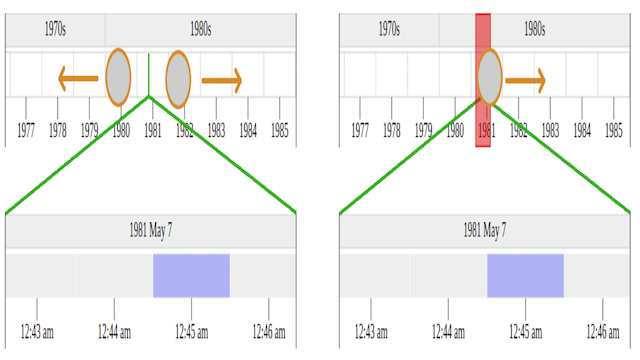Evaluating pan and zoom timelines and sliders

Abstract
Pan and zoom timelines and sliders help us navigate large time series data. However, designing efficient interactions can be difficult. We study pan and zoom methods via crowd-sourced experiments on mobile and computer devices, asking which designs and interactions provide faster target acquisition. We find that visual context should be limited for low-distance navigation, but added for far-distance navigation; that timelines should be oriented along the longer axis, especially on mobile; and that, as compared to default techniques, double click, hold, and rub zoom appear to scale worse with task difficulty, whereas brush and especially ortho zoom seem to scale better. Software and data used in this research are available as open source.
Authors
Citation
Evaluating pan and zoom timelines and sliders
Michail Schwab, Sicheng Hao, Olga Vitek, James Tompkin, Jeff Huang, and Michelle A. Borkin. Proc. CHI Conference on Human Factors in Computing Systems—CHI. 2019. DOI: 10.1145/3290605.3300786
PDF | DOI | Homepage | Preview video | BibTeX
Khoury Vis Lab — Northeastern University
* West Village H, Room 302, 440 Huntington Ave, Boston, MA 02115, USA
* 100 Fore Street, Portland, ME 04101, USA
* Carnegie Hall, 201, 5000 MacArthur Blvd, Oakland, CA 94613, USA


